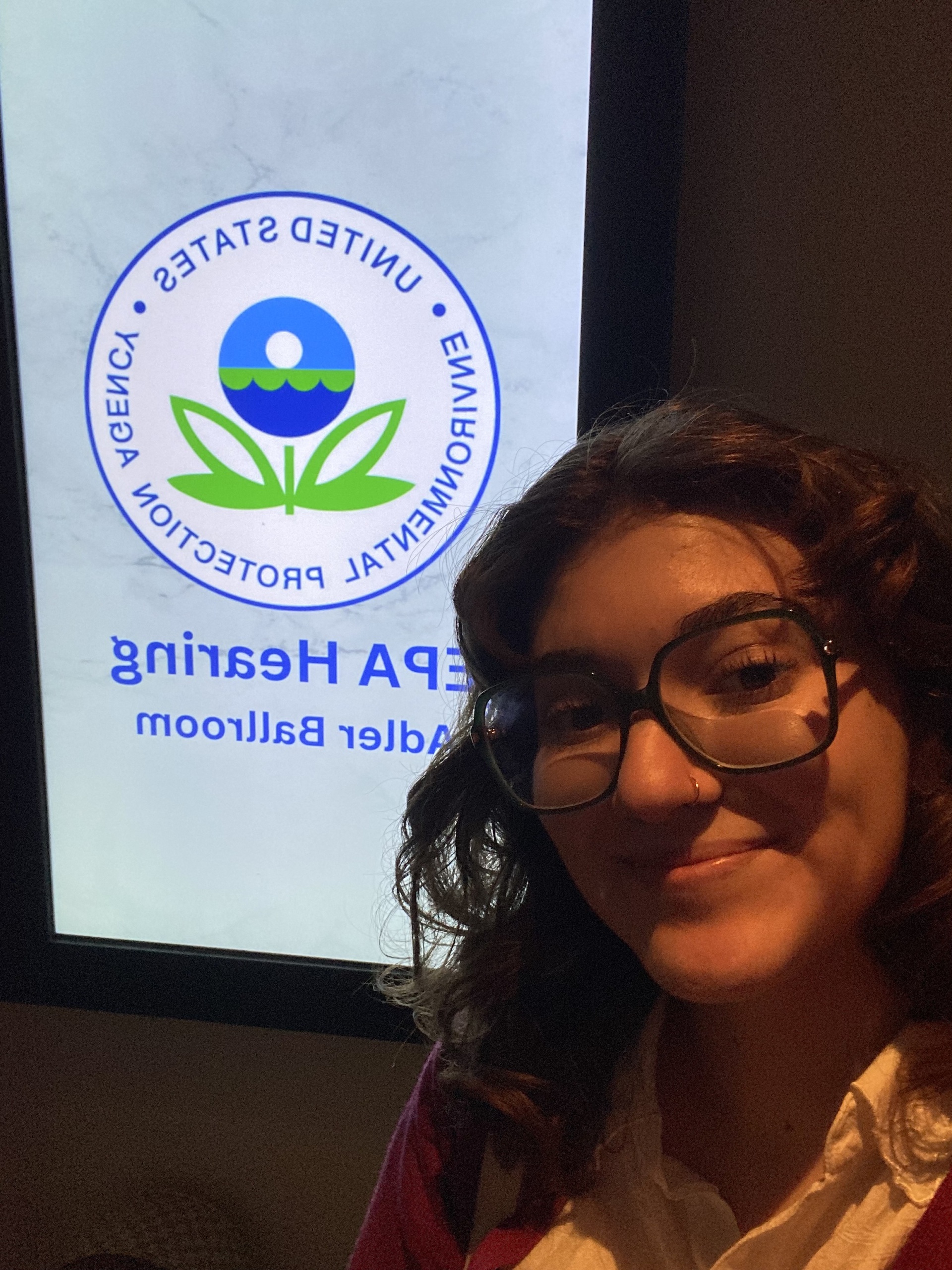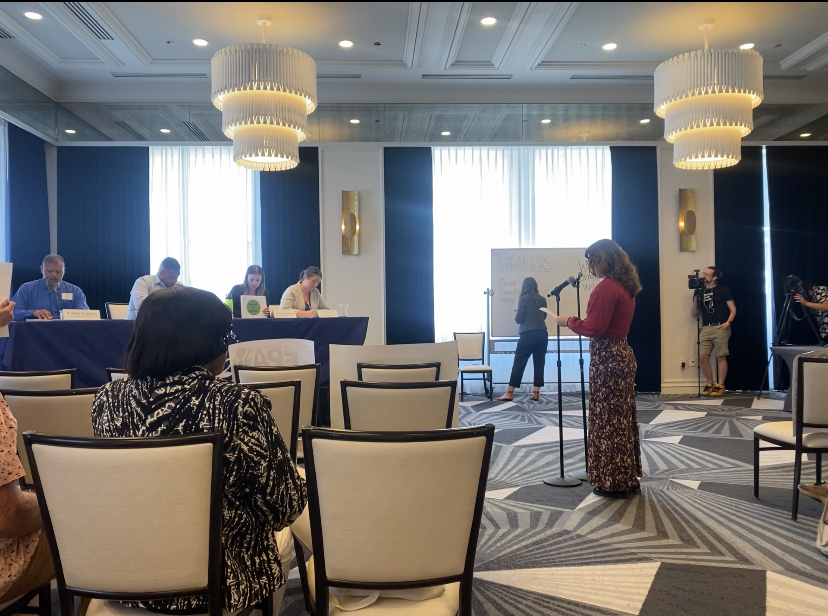Connecting Climate Justice and LGBTQ+ Justice: Three Youth Activists Fighting for Both
Jul 25, 2024

I’m Olivia Smith, LCV Government Affairs Fellow, and I had the opportunity to testify in-person before the Environmental Protection Agency (EPA) in support of improving our country’s protections from coal ash and cleaning up hundreds of contaminated sites. If you’re not familiar with coal ash, it’s a highly toxic byproduct of burning coal, which can contaminate our air, water, and land when it’s disposed of. To protect the health of our communities, we need strong and equitable safeguards.
This is why I testified before the EPA — to share my experience and show how many people are relying on the EPA to protect our environment and health.
Anyone can sign up to testify at in-person or virtual hearings through the pages that go up on the EPA’s website during open comment periods. These testimonies are vital opportunities for the EPA to hear the opinions of communities directly impacted by their draft rules and regulations.
As soon as I walked into the hearing room at the Kimpton Gray Hotel in downtown Chicago, the energy was palpable. The hearing was full of incredibly impactful firsthand accounts of the environmental and health effects of coal mining and coal ash on frontline communities. I was especially moved by the incredibly personal and vulnerable testimonies from the families and spouses of deceased coal workers. The audience at the hearing was very supportive and passionate as they held up signs and pictures of lost loved ones in between each testimony.

As I stood in front of the EPA representatives, I was nervous, but knew that dozens of people were sitting behind me fighting for what is just and right as well. The hearing was a true demonstration of the power of like-minded individuals coming together to voice their opinions and fight for a clean environment for everyone. I am very grateful for the opportunity to share my opinion and represent LCV at this hearing. It was incredibly empowering to have my voice be heard and be involved with such a dedicated group of people fighting for justice for their communities and our environment.
Hello, my name is Olivia Smith and I live in Durham, NC. Thank you for the opportunity to testify today.
As you know, in 2014, the coal ash pond at Duke Energy’s Dan River Steam Station in Eden, NC collapsed into the Dan River, releasing approximately 39,000 tons of ash and 27 million gallons of ash pond water. This disaster endangered the health of communities near the spill and downstream, and was estimated to have cost almost $300 million in ecological, recreational, and public health impacts. Before that, on December 22, 2008, a pond at Tennessee Valley Authority’s Kingston power plant broke, releasing 5.4 million cubic yards of liquified coal ash into the Emory River. Workers who helped cleanup this disaster have suffered horrible health consequences, like cardiac, neurological, and blood disorders, various cancers, and death– all likely caused by their exposure to toxic coal ash. Behind environmental disasters like the Tennessee Valley and Dan River spills are real people and communities suffering due to hazardous pollution and a lack of environmental regulation.
Coal ash contains some of the most dangerous known chemicals, including heavy metals like arsenic, lead, mercury, and chromium, which have been linked to cancer, heart and thyroid disease, reproductive failure, and neurological harm.
It is the second largest source of industrial waste in the country, and coal plants continue to produce approximately 70 million tons of coal ash every year. In North Carolina alone, there are 47 active coal ash dump sites, 10 of which are currently unregulated and likely subject to this new rule. However, the environmental contamination and health hazards caused by coal ash do not fall on all North Carolinians equally. Due to systemic environmental racism, low income and communities of color disproportionately carry the burden of this incredibly toxic waste.
The EPA must regulate all coal ash to protect the communities who have carried the burden of environmental degradation and health hazards for too long. This can only be achieved through complete site cleanup and closure of coal ash dumps and fill areas. The EPA’s draft Legacy CCR Surface Impoundment Rule will extend monitoring, closure, and cleanup requirements to hundreds of formerly exempt dump sites. However, there are still additional coal ash dump sites that must be regulated. The EPA should ensure that the proposed rule extends to all coal ash ponds, including those that did not have water in them when the original rule became effective in 2015, inactive landfills at former coal plant sites that are not producing power and do not also have legacy ponds, all coal ash stored in floodplains, on unstable ground, and in wetlands, and coal ash that was used as construction fill at playgrounds, schools, and throughout neighborhoods.
I urge the EPA to quickly move forward with this proposal, and resist calls from industry to water down the final rule. These protections are important to delivering on the President’s commitment to addressing environmental injustice and ensuring everyone has access to a clean environment. Thank you for the opportunity to share my opinion and for your time today.